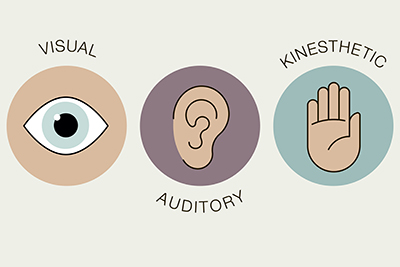Everyone has his or her own most effective learning method, whether he or she knows it or not. Some people learn best by sitting through or watching a lecture. Others may learn best by reading a text or an instruction manual. Others may prefer to dive in and learn by doing.

Some tend to ask questions upfront, while others prefer to let the information digest and percolate before requesting clarifications and additional information.
Despite these different styles, many training programs are rigid in their design and only present information in one format—for example, through presentations with Q&A opportunities.
Of course, tailoring training programs to each employee’s preferred learning style would require an unrealistic amount of effort for many organizations. The question is whether that investment would pay off in the long run through more efficient or more effective training.
Learn How They Learn
Before trainers can teach employees in the learning method that suits them best, they need to first identify what that method is. This doesn’t necessarily have to be a complicated process. Employees often know how they learn best and can just report that. A short evaluation can also provide insight.
“I always prefer to play to an employee’s strengths and teach in the style that best suits the way they learn,” says Rex Freiberger, CEO of Gadget Review, a technology and lifestyle publication with over 50,000 product reviews and ratings of the top electronics, software, and services.
“Everyone’s different and trying to make training one size fits all is really doing your employees a huge disservice,” Freiberger adds. “We evaluate new hires to see how they learn best. This involves a brief test that is of course based on the employee’s knowledge of themselves and their preferences, but we’ve found it fairly accurate for most employees.”
Ways to Identify Learning Preferences
A common evaluation tool used by many organizations is the VARK questionnaire, which takes roughly 10 minutes and helps determine which learning method best suits an employee: visual, aural, reading/writing, kinesthetic, or multimodal.
Another strategy is to experiment in a low-stakes setting. “One of the easiest ways to learn about your employees’ different learning styles is to set up a low-pressure assignment outside of their immediate role that can be learned and executed in several ways and then allow your team members the freedom to complete the assignment however they see fit and after, evaluate how they went about the assignment and collect feedback about which part of the learning process was easiest and most difficult,” says Aaron McWilliams, Director of Marketing for 1Dental.
This simple process can provide clues to how employees like to learn and how they problem-solve, McWilliams says. “The next time you send a new assignment their way, you can pair it with resources that will help them learn according to their unique styles whether that means attaching a video, running through it with them or a combination of methods.”
Structuring Training to Meet Varying Needs
Knowing what learning method best suits an employee is just the first step. For that information to be useful, it needs to influence the actual training in some way. There are multiple ways to do this. The best approach depends on the nature of the business and the time and resources at its disposal.
For example, one option would be to simply maintain a standard, one-size-fits-all approach to training. This might suffice for extremely straightforward tasks and save time and effort upfront, but as the complexity of the task increases, so, too, does the return on investment of spending some extra time to make sure employees get the most out of their training.
Another strategy is to customize a training plan for each individual employee based on the learning method best suited to him or her.
“Once we determine how they learn best, a plan is devised between the new hire and their manager,” says Freiberger in explaining the Gadget Review process. “Managers are trained in teaching to different styles and they adapt their training method depending on the needs of the employee.”
A Spectrum of Approaches to Learning
A highly personalized approach may require a lot more time and effort on the front end, but the hope is that it pays off quicker and results in more effective adoption of the material. This may work particularly well when there is a small number of employees being trained.
A middle road involves providing the resources for employees to structure some of their own training. This can be particularly effective when a large number of employees are being trained. Rather than customizing training for each individual employee, a library of materials can be made available that will hopefully be sufficient to match a variety of learning styles across all trainees.
“Trainers should accommodate different learning styles by providing diverse learning environments,” says Gilad Rom, founder of Huan. “Training activities should be varied so that employees can learn in their preferred style and also develop their learning in other styles. This will create the most effective training results while creating more flexible learners in the long term.”
For example, a training department might have all staff attend an introductory presentation on broad topics and then provide links to a library of different materials covering those topics in greater detail, such as flow charts for the visual learners, written documentation for the readers, and exercises for those who learn best while doing.
The fact that different people learn in different ways has been known and studied for years. The question for companies and their training departments, though, is what to do with that knowledge. Should they ignore it and stick with their one-size-fits-all approach? Should they create a customized training program for every new team member? Or should they try to chart a middle course?
The answer will depend on the specific needs and resources of the company, including the complexity of the knowledge to be learned and the number of trainees.
